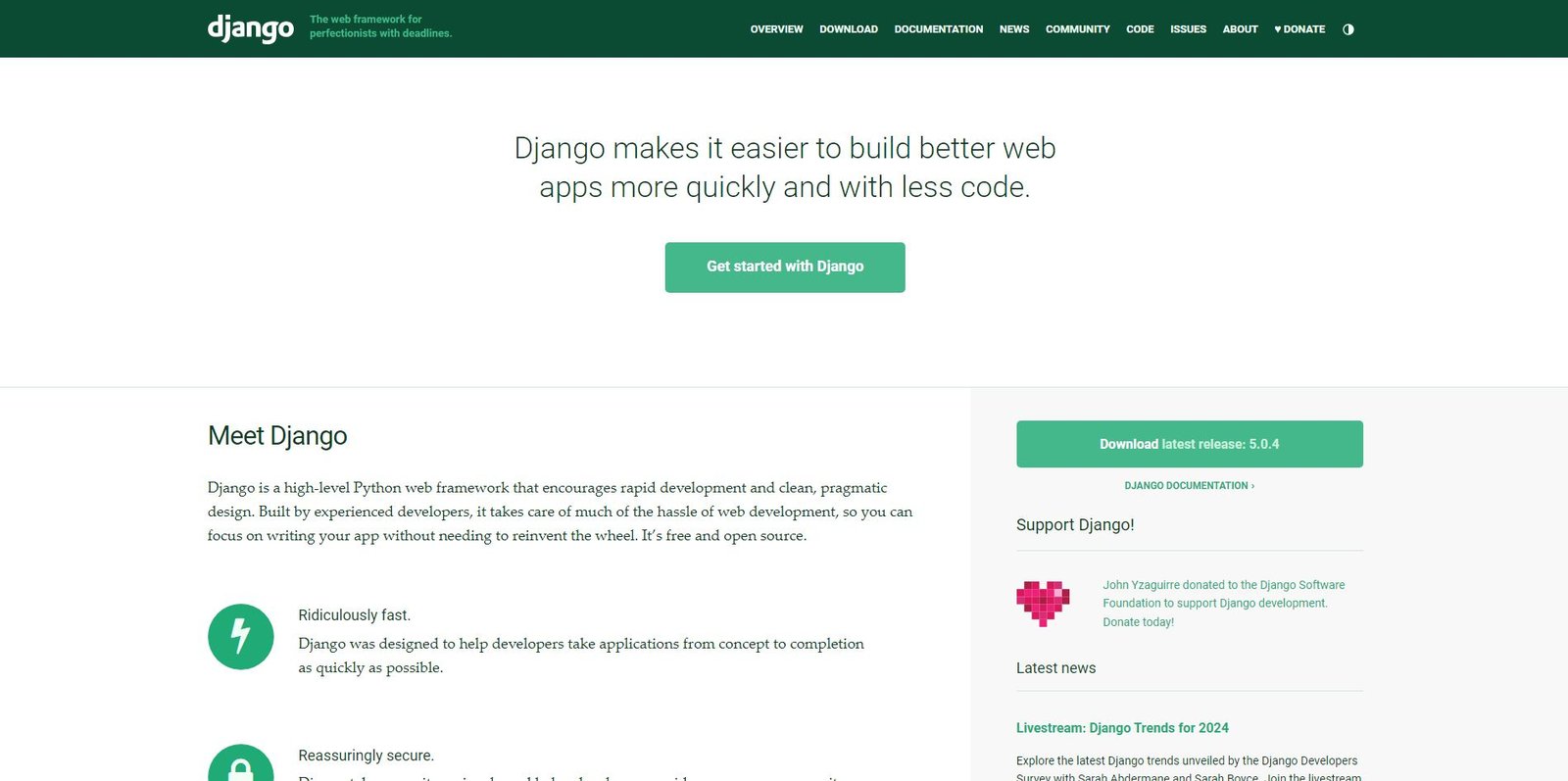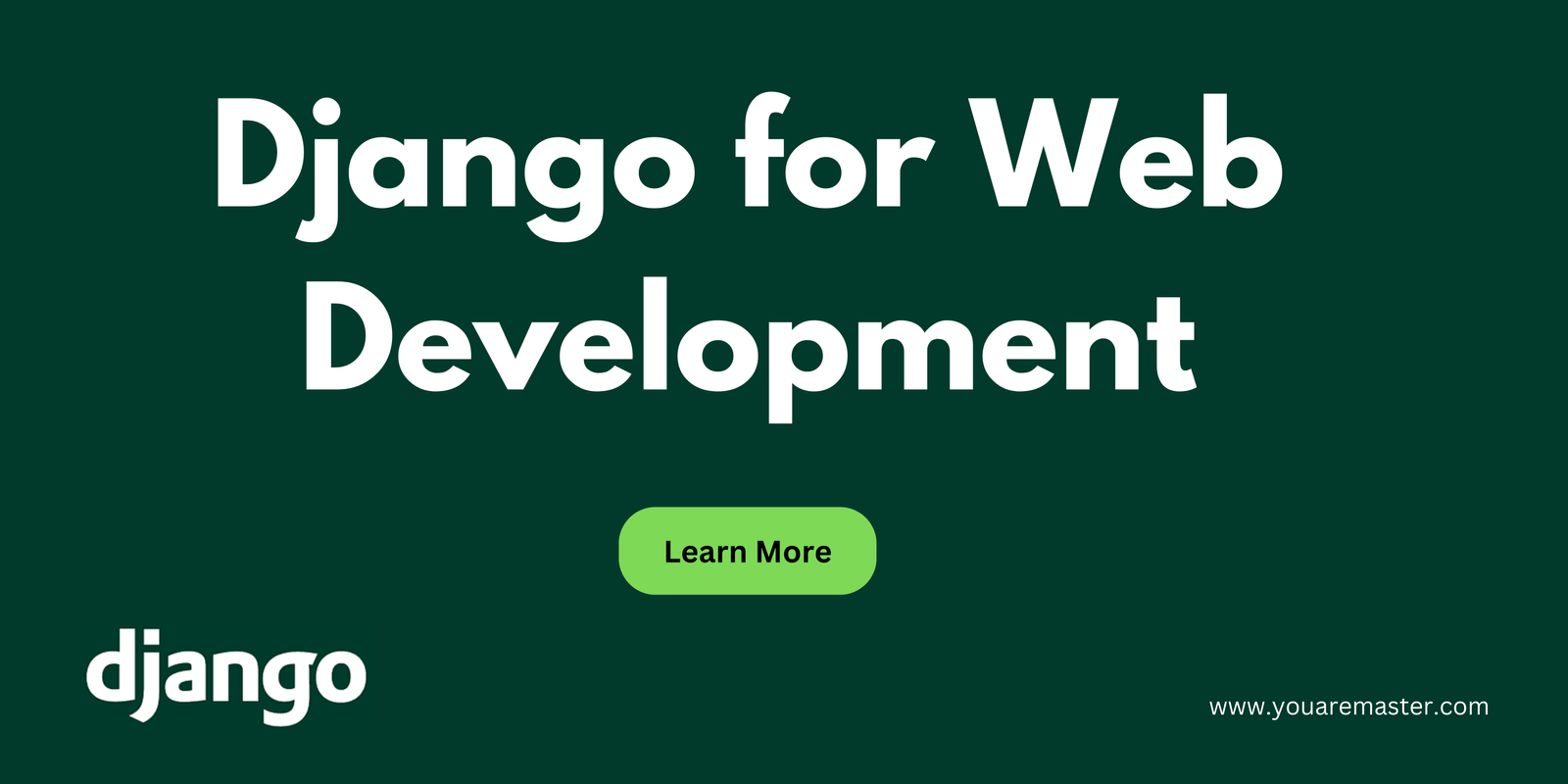Django for Web Development: Unleashing the Power of Python
One of the mainstays of online development is Django, an open-source Python web framework. Worldwide, developers use it for its scalability, high-level functionality, and pragmatic architecture. We’ll dig into the nuances of Django in this post, looking at its features, recommended practices, and use in building reliable web applications.
Introduction to Django for Web Development
Django offers a simple and useful design that makes the process of creating web applications easier. Adhering to the “batteries-included” concept, it provides an abundance of integrated functionalities that expedite development without sacrificing adaptability. Django enables developers to efficiently design a variety of online applications, including e-commerce platforms and content management systems.

Why is Django used for web development?
For web development, Django is a popular option for many reasons. It’s a high-level web framework first and foremost, promoting quick development and simple, straightforward design. Because of its “batteries included” mentality, a lot of features and capabilities are pre-installed, saving developers time and effort.
1. Getting Started with Django
Installing the framework is a must for starting the Django adventure. Fortunately, pip, the package management tool for Python, makes installing Django simple. A few straightforward actions, such as starting the project structure and configuration files, are all that are required to set up a Django project once it has been installed.
2. Django Models
The robust Object-Relational Mapping (ORM) technology at the core of Django allows programmers to construct data models with Python classes. These models provide for smooth communication with the underlying database by encapsulating the application’s data structure. Data integrity is maintained throughout the development lifecycle thanks to Django’s migration mechanism, which automates the process of propagating changes to the database schema.

3. Views and Templates in Django
In Django, views include the logic that generates replies and processes requests. By incorporating data from views into pre-defined templates, developers may create dynamic HTML pages by utilizing Django’s templating engine. This division of responsibilities encourages code maintainability and reusability, which supports a tidy and well-organized project structure.
4. Django Forms
With its Form class, Django streamlines form handling so that developers may easily specify form structures and validation criteria. Developers may produce HTML forms dynamically and reduce manual coding labour and the risk of typical form-related vulnerabilities by utilizing Django’s form rendering features.
5. Django Admin Interface
The admin interface that comes with Django offers an easy-to-use setting for handling application data. Developers may expose models to the admin interface with very little setup, which frees administrators from writing extra code to do CRUD (Create, Read, Update, Delete) tasks. The pre-built features expedite the development process and simplify content management procedures.

6. Authentication and Authorization in Django
Web development requires security, and Django provides strong user authentication and authorization methods. By utilizing Django’s authentication middleware and user authentication views, developers can easily incorporate authentication procedures. Additionally, granular control over user access is made possible by Django’s permission system, which guarantees the security and integrity of data.
7. Working with Django REST Framework
With Django’s integration with the Django REST Framework (DRF), developers can easily create robust, RESTful APIs in the age of web APIs. By offering views, serializers, and authentication methods specifically designed for API development, DRF expands the possibilities of Django. The Django REST Framework makes it easier to provide application functionality via APIs, regardless of whether you’re developing a mobile backend or a single-page application.

8. Deploying Django Applications
Scalability, performance, and security are important considerations when deploying Django applications in production settings. There are several deployment choices available to developers, including containerized environments, cloud platforms, and conventional servers. It is possible for developers to guarantee a seamless deployment process and excellent application performance by following best practices and utilizing solutions such as Docker and Kubernetes.
9. Conclusion-Django for Web Development
Django has established itself as a leader in the web development space because to its adaptability and beauty. Django enables developers to rapidly prototype and create enterprise-grade applications, enabling them to realize their ideas effectively. Python’s growing popularity in the software development world means that Django’s future looks positive, with further innovation and expansion in the web development space anticipated.
FAQs
1. Is Django suitable for beginners in web development?
Yes, Django is a great option for budding web developers because to its extensive documentation and user-friendly features.
2. Can I use Django to build mobile applications?
The Django REST Framework makes it possible to create APIs that may be used by mobile applications, even though Django is primarily focused on online development.
3. How does Django compare to other web frameworks, like Flask?
Full-stack web framework Django offers a large feature set right out of the box, whereas micro-framework Flask offers more flexibility and a simpler design.
4. Is Django suitable for large-scale applications?
Yes, Django’s scalability and dependability are demonstrated by the fact that it supports a multitude of large-scale applications, such as Pinterest and Instagram.
5. What resources are available for learning Django?
Excellent resources for learning Django include the official documentation, tutorials, and online forums like Stack Overflow and Reddit.
